Book of Mormon Three Voice Hypothesis #2 — N Voice Introduction and Comparison to S
This is the second in a series of posts defining the Book of Mormon Three Voice Hypothesis, based on computer wordprint analysis of BOM text. This will focus on introducing the N Voice (narrative). And contrasting that to the S Voice.
Review of definitions and methodology
I developed a database of Book of Mormon text divided by S (sermon) and N (narrative). See the introductory post for a review of this methodology, as well as the code for charts included here. Aided by the Voices in the Book of Mormon database created by John Hilton III, Shon Hopkin, Jennifer Platt, Randal Wright, and Jana Johnson, I separated out each verse, and in some cases even drilling into a verse, the narrative (N) voice with the sermon (S) voice. I identified some unique characteristics and trends and created a bunch of charts and tables from this data that illustrate these.
Passages identified as S and N
The S and N is broken out by verse and sometimes sub-verse. Here is the breakout by chapter of percentage each of S and N.

Major S voices are shown. Mormon’s voice is taken as N except for the a few small passages reversed to S. All non-Mormon voices are allocated to S, except for a couple passages from Zeniff and Helaman with strong N voice characteristics.
N Voice Characteristics
- Third person, past tense, frequently in passive voice.
- Surprisingly low amount of religious terms and concepts
- Use of unique vocabulary and phrases with >10 times more frequency than S Voice: ‘came to pass’, ‘possession of the’, ‘contend with’, ‘among the people’, ’round about’, ‘as many’, ‘the borders’
- Preference for ‘those’ over ‘these’
- Interesting vocabulary usage of some terms, with >5 times more frequency than S Voice: priest, commencement, wroth, caused, throughout, dissensions, mourning, determined, exceedingly, circumstances, astonishment, contention, wax, sorrowful, fine, silver, gold, affairs, arose
- Heavier usage (compared to S voice) in common words like: the, also, and, on, by, who, with, might
Classic N Voice Examples
Mosiah 27:2-4
2 And it came to pass that king Mosiah sent a proclamation throughout the land round about that there should not any unbeliever persecute any of those who belonged to the church of God.
3 And there was a strict command throughout all the churches that there should be no persecutions among them, that there should be an equality among all men;
4 That they should let no pride nor haughtiness disturb their peace; that every man should esteem his neighbor as himself, laboring with their own hands for their support.
Alma 4:7-9
7 Now this was the cause of much affliction to Alma, yea, and to many of the people whom Alma had consecrated to be teachers, and priests, and elders over the church; yea, many of them were sorely grieved for the wickedness which they saw had begun to be among their people.
8 For they saw and beheld with great sorrow that the people of the church began to be lifted up in the pride of their eyes, and to set their hearts upon riches and upon the vain things of the world, that they began to be scornful, one towards another, and they began to persecute those that did not believe according to their own will and pleasure.
9 And thus, in this eighth year of the reign of the judges, there began to be great contentions among the people of the church; yea, there were envyings, and strife, and malice, and persecutions, and pride, even to exceed the pride of those who did not belong to the church of God.
Alma 52:3-5
3 And it came to pass that the brother of Amalickiah was appointed king over the people; and his name was Ammoron; thus king Ammoron, the brother of king Amalickiah, was appointed to reign in his stead.
4 And it came to pass that he did command that his people should maintain those cities, which they had taken by the shedding of blood; for they had not taken any cities save they had lost much blood.
5 And now, Teancum saw that the Lamanites were determined to maintain those cities which they had taken, and those parts of the land which they had obtained possession of; and also seeing the enormity of their number, Teancum thought it was not expedient that he should attempt to attack them in their forts.
Charts illustrating strong S Voice vocabulary and phrases
See introductory post for the code and explanation on these. Top chart is for all. Second is N Voice isolated. Third chart is S Voice isolated. For this comparison, we are focusing on the first half (before orange line) where the N and S Voices are purest.
‘all the’
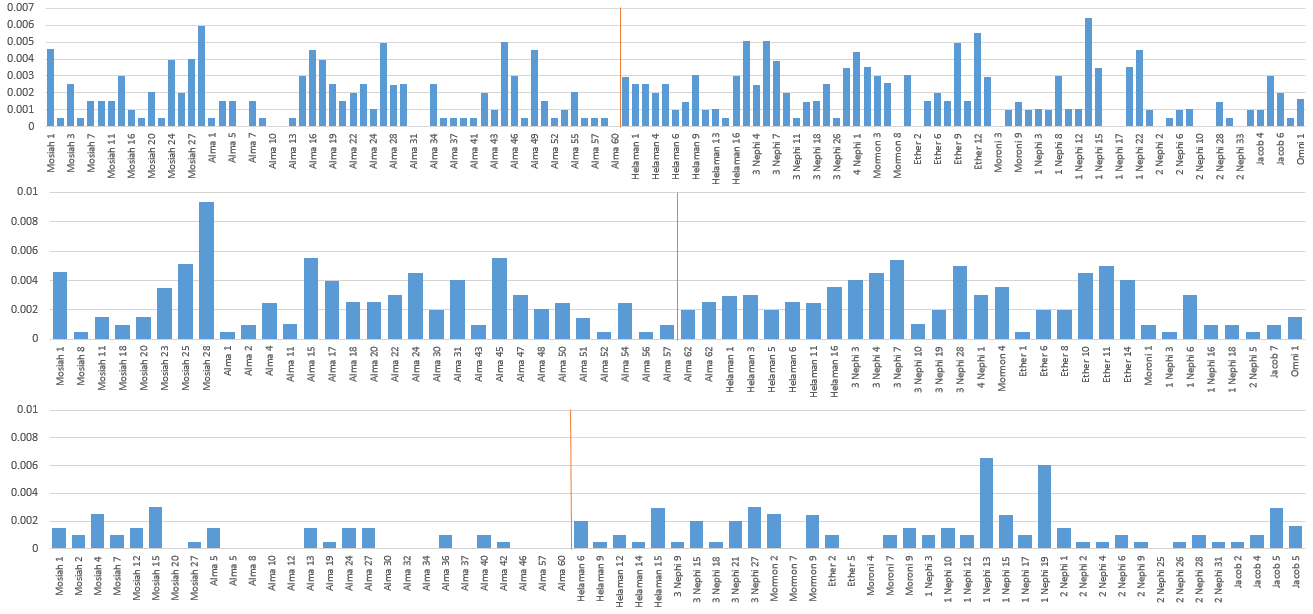
‘that when’:
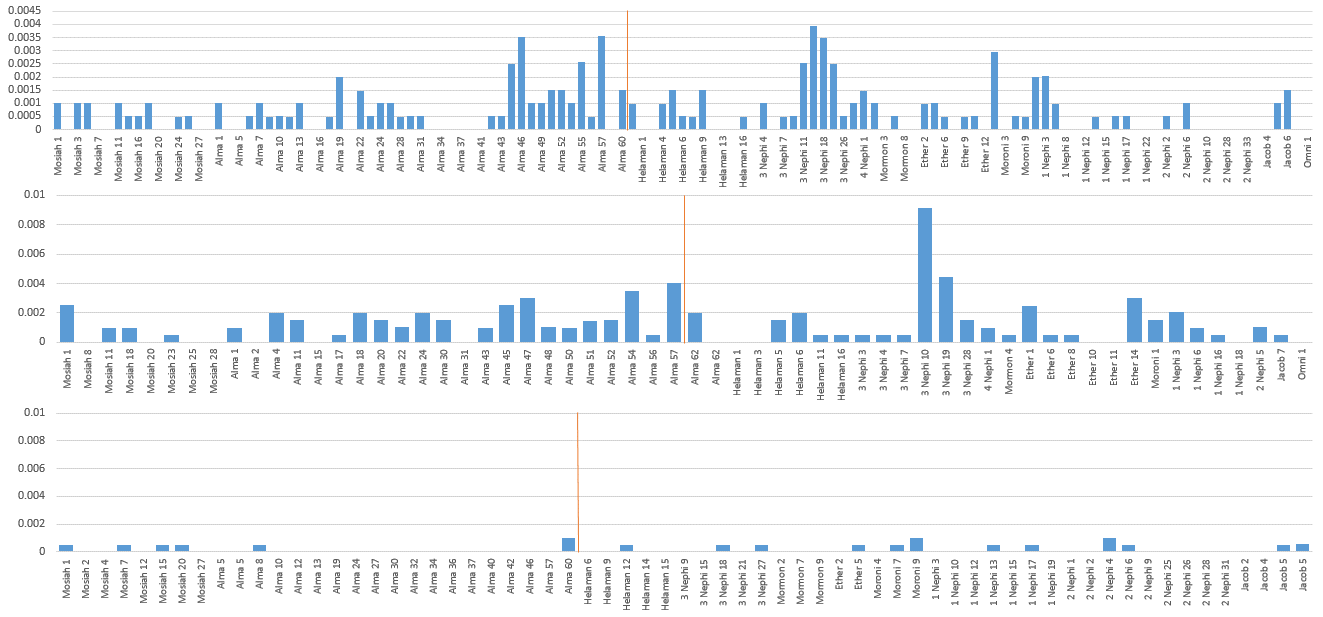
heavy use of ‘thus’:
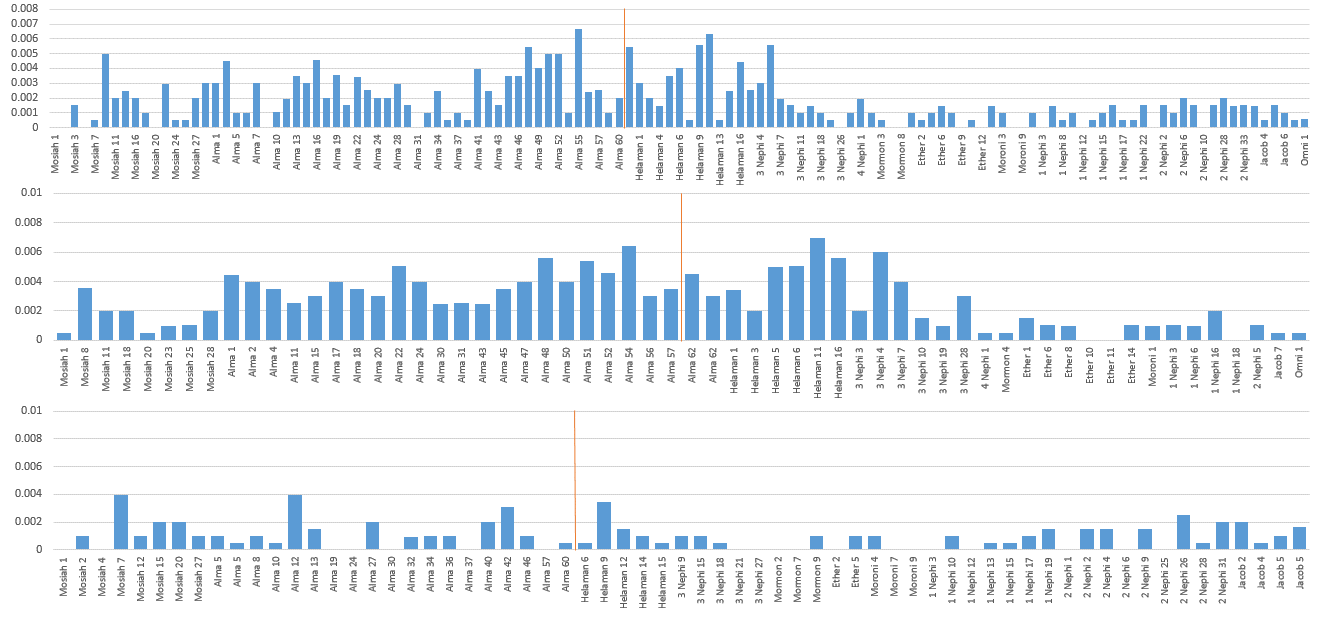
This introduces another trend I will discuss in a future post. The ‘L Voice’ (late) comes in about the end of Alma and trends up until maximizing in Nephi. This is a good example of an L Voice trend, ie the trailing off of a heavy S Voice word ‘thus’.
‘these’ is S Voice:
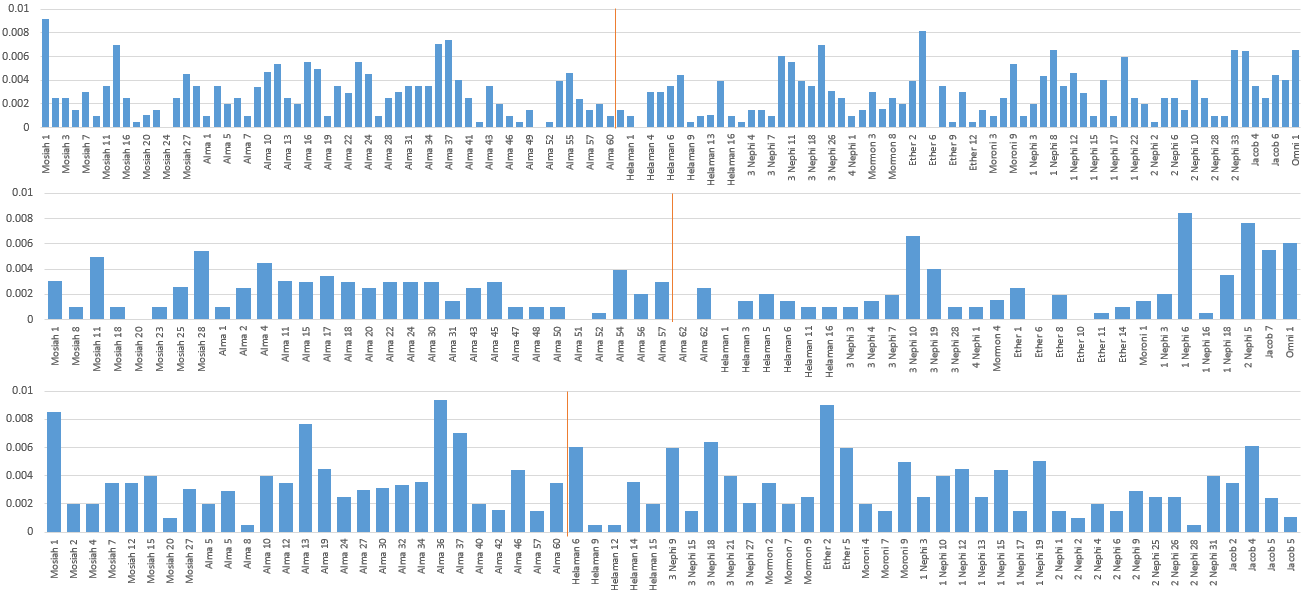

while ‘those’ is N Voice:
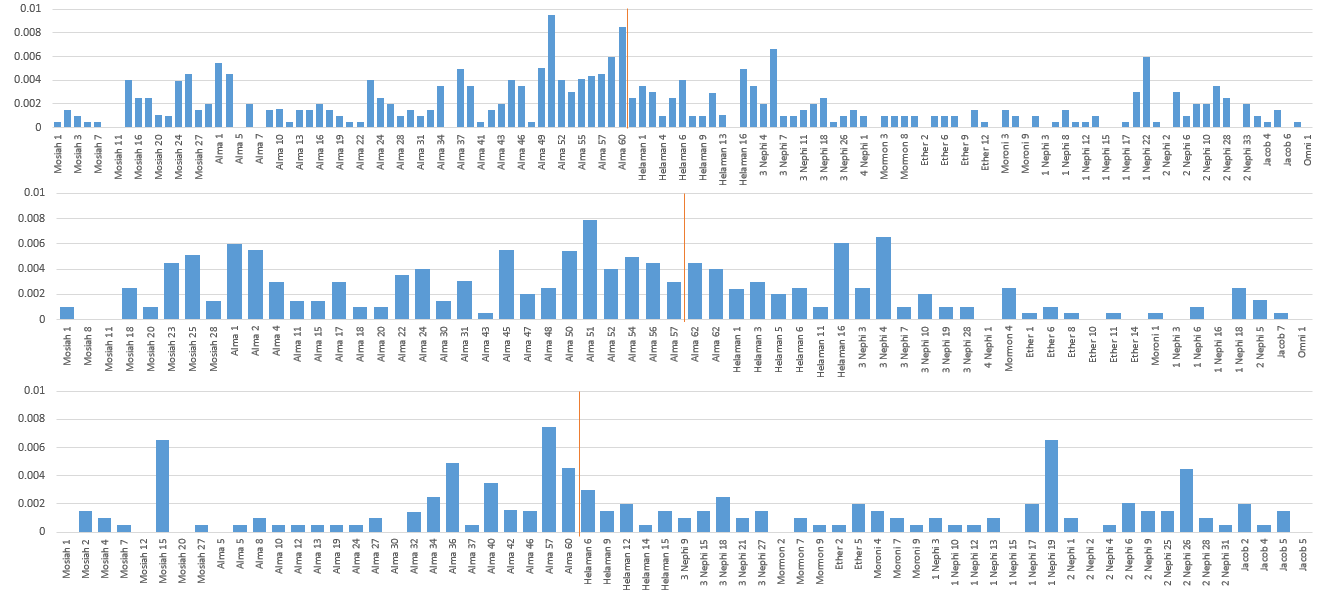

Here is the distribution for ‘took’.
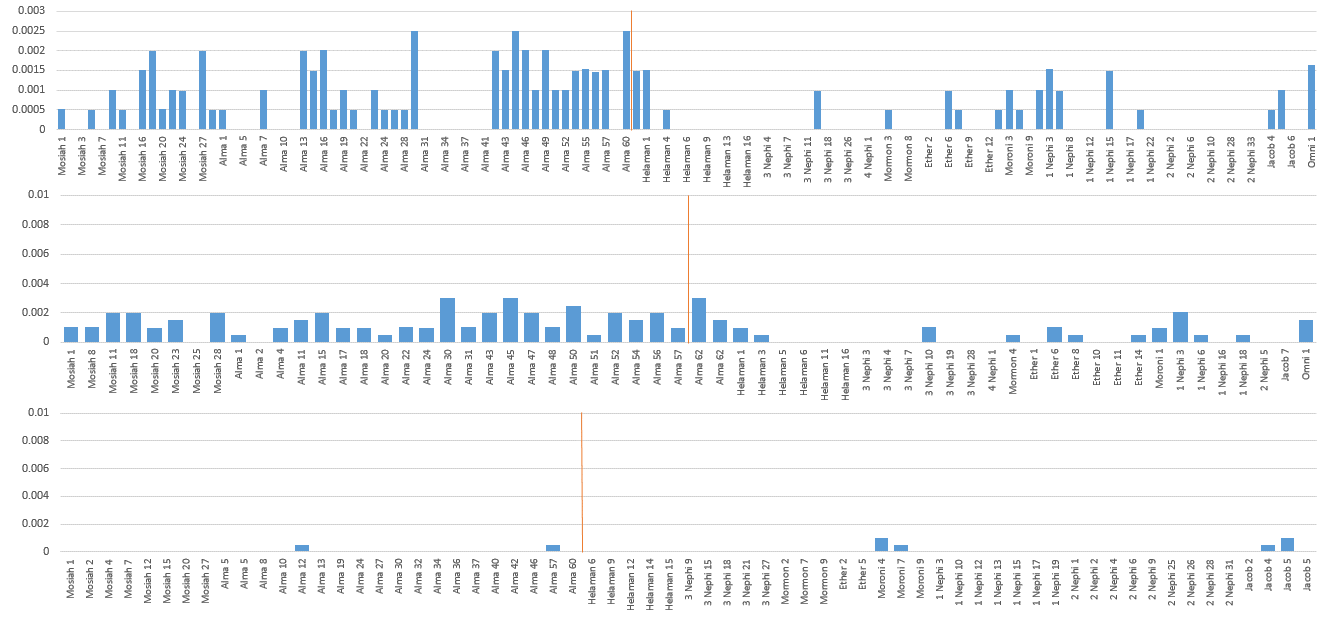
This is a fascinating one. It’s a past tense verb, so we should expect it to be more frequently used in N than S, but a ratio of 40 times more likely is startling. Also, to see the usage completely fall off the map in the second half of the BOM is very interesting.

‘began to’ is a strong characteristic of N Voice:
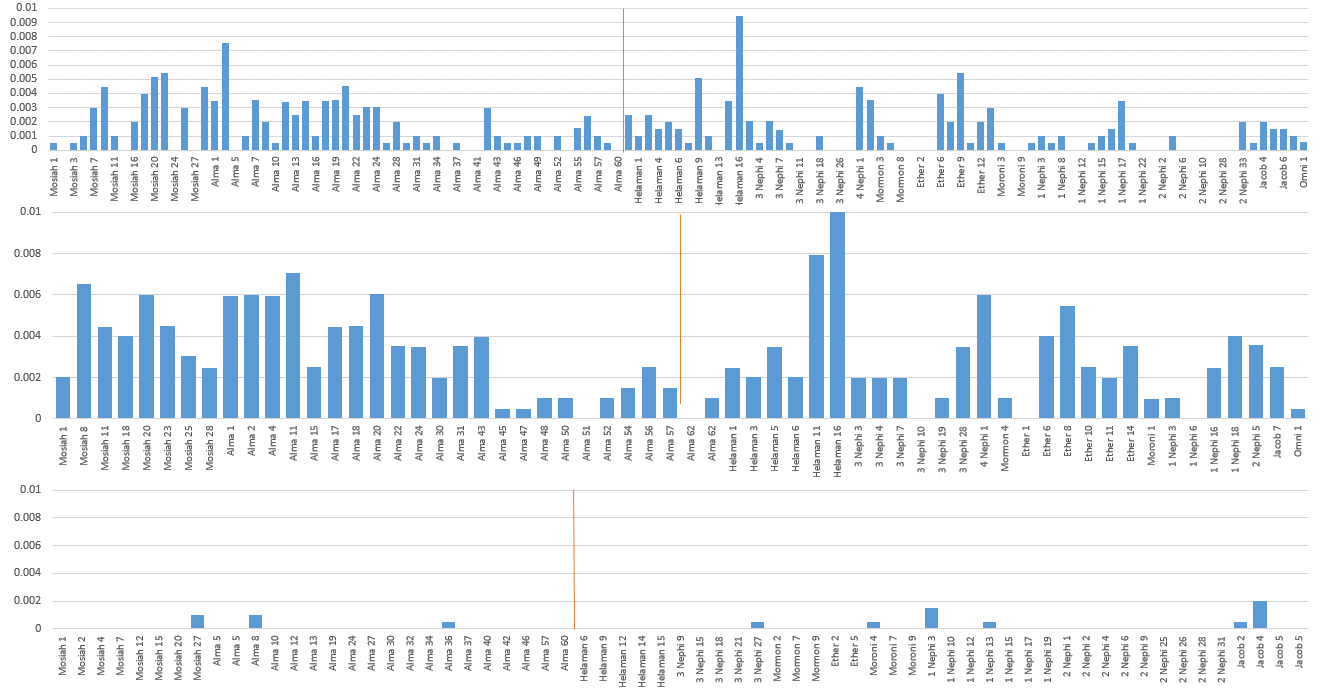
’round about’:
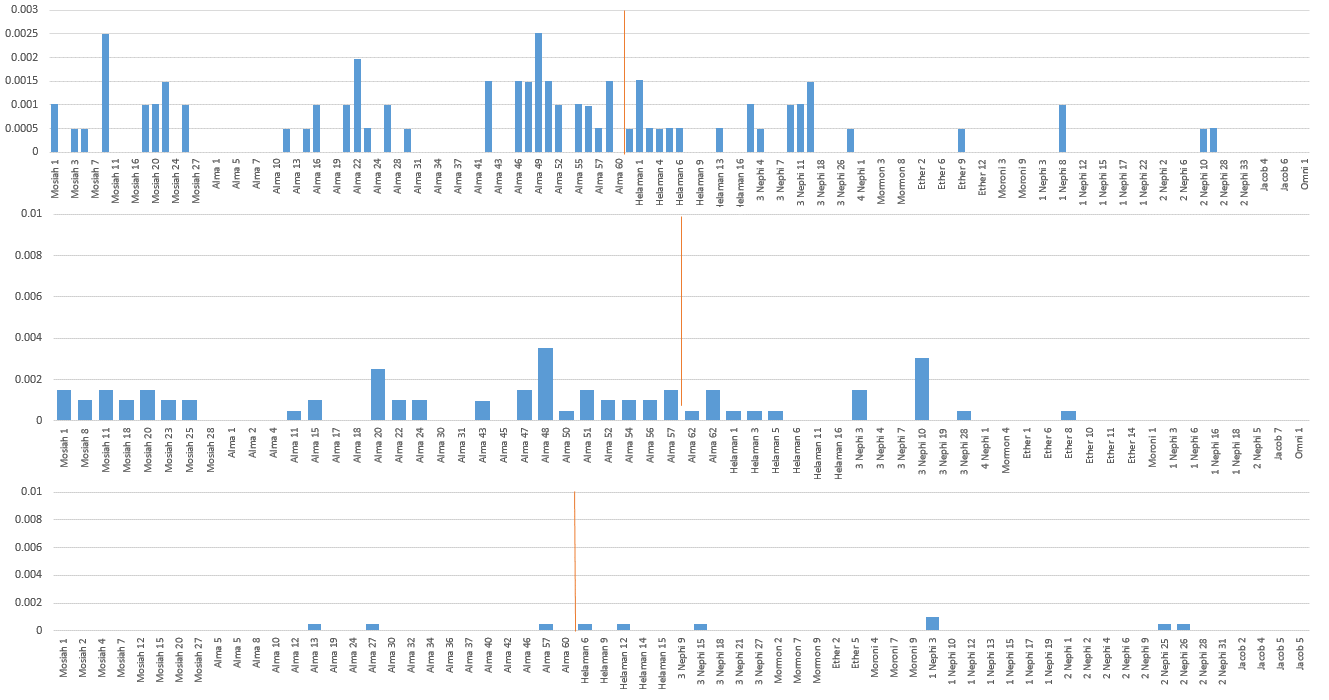
‘these words’ This an odd one. Since I already told you ‘these’ is S Voice and ‘those’ is N Voice and words implies a gospel related theme, the inclination is to guess S Voice on this. But ‘these words’ is strong N Voice.
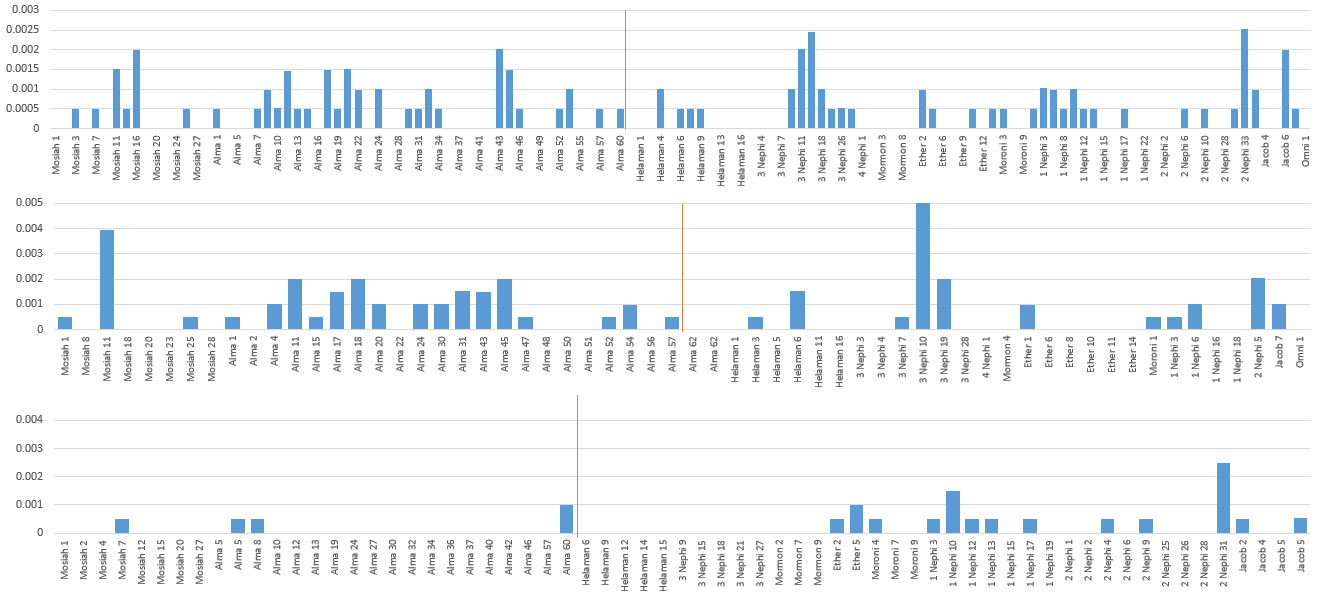
Usage of common words
I took all words and phrases with > 100 count and compared them between N Voice and S Voice. I removed the words/phrases obviously heavily weighted towards S or N due to context or being part of the catch phrases like ‘came to pass’. This list is the list that is heavier weighted to N. Some of these are a little surprising.
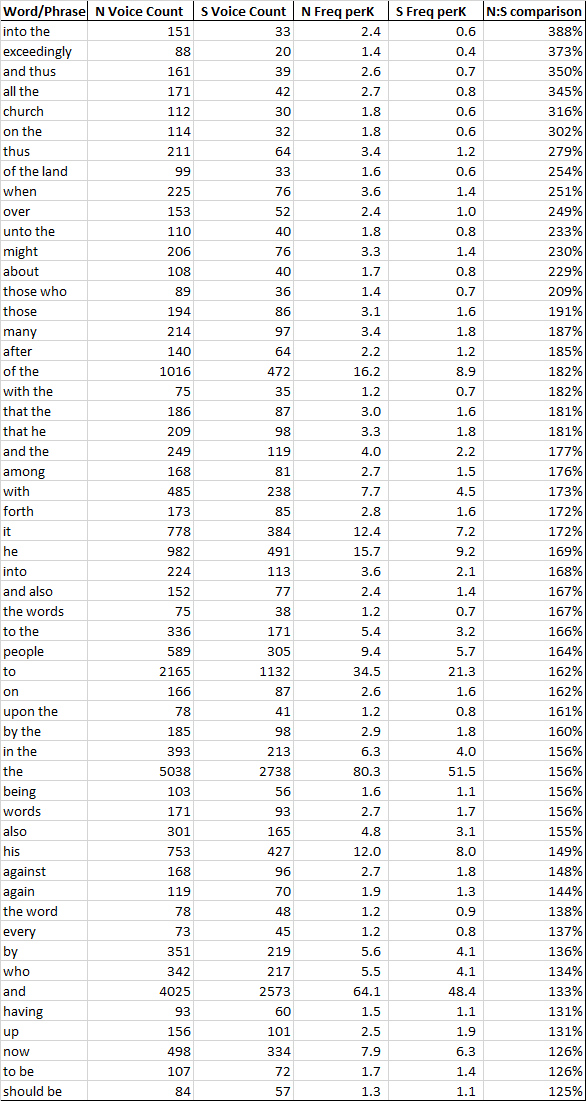
Conclusions
None so far. I hope to show that the N and S Voice are a strong example of the display of consistent, distinct voices within a literary work. But I don’t have any theories for why. Is it possible for one author to do this? Did Joseph write it by himself? Could Mormon have been responsible for the two voices? Spaulding-Rigdon? Does this prove there were multiple ancient authors? I think more statistical study of this data, especially with the text separated like this will lead to insights into these questions, but that is beyond my scope. I appreciate the text for what it is, and these series of posts are intended to give greater insight into the text.
The next post will continue the N vs S comparison, focusing on S voice style.
Malcolm J Leitch
It would be interesting if this analysis could be done on other literary works of a similar length by (supposedly) a single author.